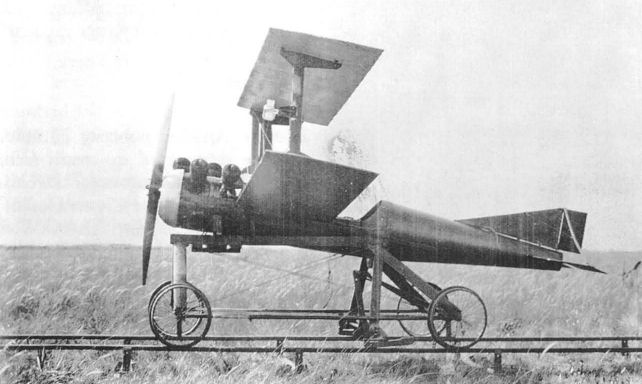
Описание
Страна: США
Год: 1918
J.Wegg General Dynamics Aircraft and Their Predecessors Since 1912 (Putnam)
Bug
A few months after the United State entered the Great War, a scheme was devised to spring a surprise attack on German cities and industrial targets behind the front line using large numbers of unmanned flying bombs. By this action, it was hoped that morale would be broken and the conflict brought to a swift conclusion.
The Aircraft Production Board issued specifications in great secrecy in early October 1917 to three manufacturers, Dayton Wright, Curtiss, and Lawrence Sperry. The requirements were simple, a small self-controlled aircraft capable of flying 200 miles, carrying 200 lb of explosives, with the cost not to exceed $200 each. The trajectory had to be predetermined on the ground and an electrically-driven gyro controlled the direction of flight, an altimeter the height, and a subtracting anemometer the distance. A speed of over 100mph was desired but not specified.
Initial studies were undertaken by Fred Nash and Orville Wright designed a small biplane which came to be known as the Bug. Constructed of scrap aircraft spruce, plywood, and paper, the Bug could be assembled in five minutes by two men with a screwdriver and spanner. Initially, a two-cylinder engine was planned for the Bug, but this idea was abandoned in favour of a 37hp four-cylinder engine designed by Dayton Wright and built by the DePalma Manufacturing Co. This drove a 5ft diameter wooden propeller and the control surfaces through a system of valves and bellows.
Early in 1918, Kettering decided to build a man-carrying biplane to test the new engine and a lightweight single-seater was designed by O W Thomas, formerly of Thomas Brothers, and now with Dayton Wright. The aircraft was built at South Field and flown by Howard Rinehart in early spring. However, the engine was unsuited for manually-controlled flight and the testbed was quickly abandoned.
Test flights with Bugs started in late spring, launching Bugs from a car driven on a track, and in calm air the Bug flew well at 120-125mph. After inspection by the Army, at least twenty Bugs were sent to NAS Pensacola for trials and 'shot' at anchored targets 90 mil s away in the Gulf of Mexico. Evidently, these were successful and a contract for full-scale production awarded but the signing of the Armistice caused the Bug's cancellation.
Span 15ft; length 12ft.
Описание:
- J.Wegg General Dynamics Aircraft and Their Predecessors Since 1912 (Putnam)
- Форум Breguet's Aircraft Challenge
Фотографии
-
J.Wegg - General Dynamics Aircraft and Their Predecessors since 1912 /Putnam/
A Bug on its launching framework.
-
J.Wegg - General Dynamics Aircraft and Their Predecessors since 1912 /Putnam/
A Bug about to be launched during trials as NAS Pensacola, Florida.
-
Форум - Breguet's Aircraft Challenge /WWW/
A replica which can be seen in the United States Air Force Museum at Dayton, Ohio.




